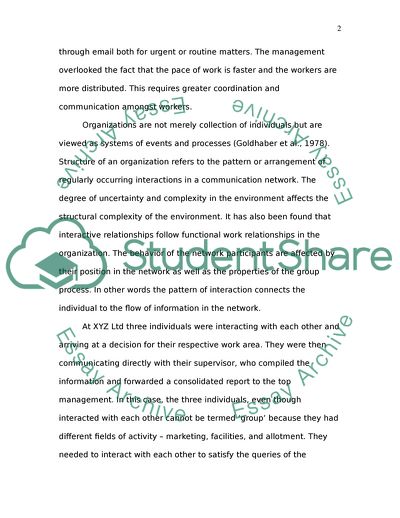Cite this document
(Organisational Structure and Communication Flow Essay Example | Topics and Well Written Essays - 1500 words, n.d.)
Organisational Structure and Communication Flow Essay Example | Topics and Well Written Essays - 1500 words. https://studentshare.org/management/1713122-organisational-structure-and-communication-flow
Organisational Structure and Communication Flow Essay Example | Topics and Well Written Essays - 1500 words. https://studentshare.org/management/1713122-organisational-structure-and-communication-flow
(Organisational Structure and Communication Flow Essay Example | Topics and Well Written Essays - 1500 Words)
Organisational Structure and Communication Flow Essay Example | Topics and Well Written Essays - 1500 Words. https://studentshare.org/management/1713122-organisational-structure-and-communication-flow.
Organisational Structure and Communication Flow Essay Example | Topics and Well Written Essays - 1500 Words. https://studentshare.org/management/1713122-organisational-structure-and-communication-flow.
“Organisational Structure and Communication Flow Essay Example | Topics and Well Written Essays - 1500 Words”. https://studentshare.org/management/1713122-organisational-structure-and-communication-flow.


